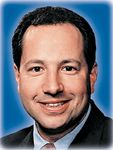Article
With investing, variety is the spice of life
Like everyone else, I'm frustrated and confused by the stock market and the global economic situation. How can I reduce the risk in my portfolio but still have it grow for the long term?
Q: Like everyone else, I'm frustrated and confused by the stock market and the global economic situation. How can I reduce the risk in my portfolio but still have it grow for the long term?

Euphoria was rampant back then, as many felt those returns were expected and the chance of loss, slim. Disappointment settled in the minds of investors who earned an annual 23% rate of return while their neighbors earned 29%. While that bubble was slower to burst, burst it did, and what ensued was a bear market from whose ashes arose a record-breaking stock market. In fact, of the previous 22 major declines since 1925 (about one every 3½ years), the market has always come back to attain new highs.
Not surprisingly then, given the recent market sell-off, physicians all over the country now have an eye toward reducing risk within their portfolios while maintaining some level of growth potential for the future. There are two ways to reduce risk: One is through proper diversification (not having all of your eggs in one basket); the other is time (the amount of time until withdrawals will need to be made). Depending on your stage of life, your investment timeframe may be long term (retirement), medium term (college funding), or short term (purchasing a new home). The return on your investment portfolio will be more predictable the longer the amount of time you devote to any given investment strategy.
If the investment time period is less than 3 to 5 years, an appropriate strategy would be to invest primarily in fixed income (bonds) and cash equivalents (money markets, CDs, or treasury bills). If, however, the time period is expected to exceed 3 to 5 years, investing a portion of assets in equities would be reasonable. Time periods in excess of 5 years generally provide a much lower level of volatility for equities (stocks).
Once you have defined your investment goals and determined a time frame, your investment strategy can be accomplished by creating a diversified portfolio. This involves combining various asset class types and blending high-return, high-risk asset classes with those characterized by lower returns and lower risk.
By concentrating on asset class selection, you can structure a portfolio and be relatively confident of its overall risk and its projected long-term return. A number of computer software programs can aid in asset allocation number crunching.
Q: Are offshore trusts really protected if I'm sued beyond my malpractice insurance limits?
A: An increasingly popular asset-protection planning device for physicians and other wealthy individuals and families is an offshore trust. Offshore trusts and foreign trusts generally have a minimum of one trustee who is not a resident of the United States. Accordingly, an offshore trust is typically governed by the laws of a foreign country selected because of its favorable creditor protection legislation. Common jurisdictions include the Isle of Man, the Cayman Islands, and the Cook Islands.
Foreign trusts are irrevocable, but usually provide a third party with a power to amend, and the settlor (the creator of the trust) with control over the trust. Such trusts almost always have one non-U.S. trustee acting at all times (regardless of whether the trust assets are situated in the U.S.), and the foreign trustee holds the trust powers and, in particular, the power to distribute the trust's income and principal.
Newsletter
Stay current with the latest urology news and practice-changing insights — sign up now for the essential updates every urologist needs.







